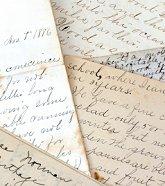
Biographies are a staple on many bookstore and library shelves, but knowing how to write a biography is trickier than simply penning a life story. A good writer will do more than just write about a person, they will let readers live that life and understand its meaning and significance in ways other types of writing cannot accomplish.
Biographies Versus Autobiographies
Biographies and autobiographies are not the same type of work. A biography is usually of a well-known figure in history, politics, the arts, the scientific community, entertainment, or a similar field, while an autobiography is the writer writing a personal life history. Biographies tend to be more objective than personal reflections, and are often written by established experts such as historians or scholars.
There are two types of biographies that can be written: authorized and unauthorized. An authorized biography is one that is written with permission of the individual or their estate if they are deceased. An unauthorized biography is written by someone without explicit, approved access to many primary resource materials such as diaries or family archives. Both types of work are equally valid, although they can present vastly different portrayals of the same individual.
Steps for How to Write a Biography
There are five basic steps for writing a biography:
- Choosing the person to be written about
- Researching the person's life
- Choosing a format for the written biography
- Doing the actual writing
- Editing the biography
Choose a Subject
Who to write about is a critical decision when writers decide how to write a biography. Many famous individuals - presidents, actors, and other notable figures - already have multiple published biographies, and it is important to choose someone about whom there is more to say. On the other hand, the subject of the biography can vary greatly depending on the purpose for writing it. A grandparent or eccentric ancestor, for example, may be the perfect subject for a school biography report or local family history.
Research
Research is the key to an outstanding biography. There are two type of resource material that can be used: primary documents and secondary sources. Primary documents include:

- Diaries and journals
- School transcripts
- Birth certificates, marriage licenses, and other official documents
- Letters and other works written by the individual
- Pictures of the individual
These materials provide an intimate insight into the person being studied, but they still do not provide a complete view. Writers researching a biography should also investigate secondary sources, including:
- Interviews with people who know the subject, including family members, friends, teachers, employers, scholars, clergy, and descendants
- Previous non-biographical articles about the subject
- Visits to significant locations in the subject's life, such as a home town, birthplace, or burial place
The more sources a writer can use to construct a biography, the more complete and unbiased that biography will be.
Choose a Format
The easiest and most obvious format for a biography is chronological, but it isn't always the best choice for every person's life story. One common way to format a biography is to confine the timeframe to relevant years, rather than encompassing an individual's entire life. A presidential biography, for example, may best be confined to the former president's political career.Another option for formatting a biography is a narrative form. This structure may discuss the same years of a person's life or their significance on others several times, but each time from a unique viewpoint. Together, several viewpoints can give a much richer perspective than a straight chronological outline.
Write the Biography
Writing the biography may be the easiest step, once thorough research has been completed. Tips for writing an engaging, useful biography include:
- Limit material to what is relevant to the biography
- Use active verbs and descriptive adjectives to create an entertaining picture of the subject
- Break the work into useful sections such as life phases to help organize the writing
- Use quotations and excerpts to provide greater authenticity to the writing
It is rare to use every bit of research when writing a biography; good writers will choose only the best, most interesting information to include.
Editing
Once the biography is finished, proper editing is essential to catch any spelling, grammatical, or factual errors. Having someone else read the work can also help determine if it flows well and is understandable. Substantial revisions may be necessary for the work to be its best, but as a tribute to one outstanding individual, those revisions can help present the best possible biography.
Pursuing Publication
If the biography is to be published, either as a book, school report, or article, the author should initially expect rejection. Dealing with rejection is a regular part of a freelance writer's life, no matter how carefully researched and written a biography is. To minimize rejection:
- Establish a platform. Becoming an expert on the subject of the biography through teaching classes, publishing smaller articles, giving speeches, or conducting workshops will help writers create an audience hungry to know more about that person.
- Choose the best publisher. Not all publishing houses accept biographies. Choosing one that publishes similar books will increase the chances of the publisher being interested in another biography.
Of course, the best way to minimize rejection is to write the best biography possible. By knowing how to write a biography effectively, writers can honor significant individuals and advance their freelance writing careers.







